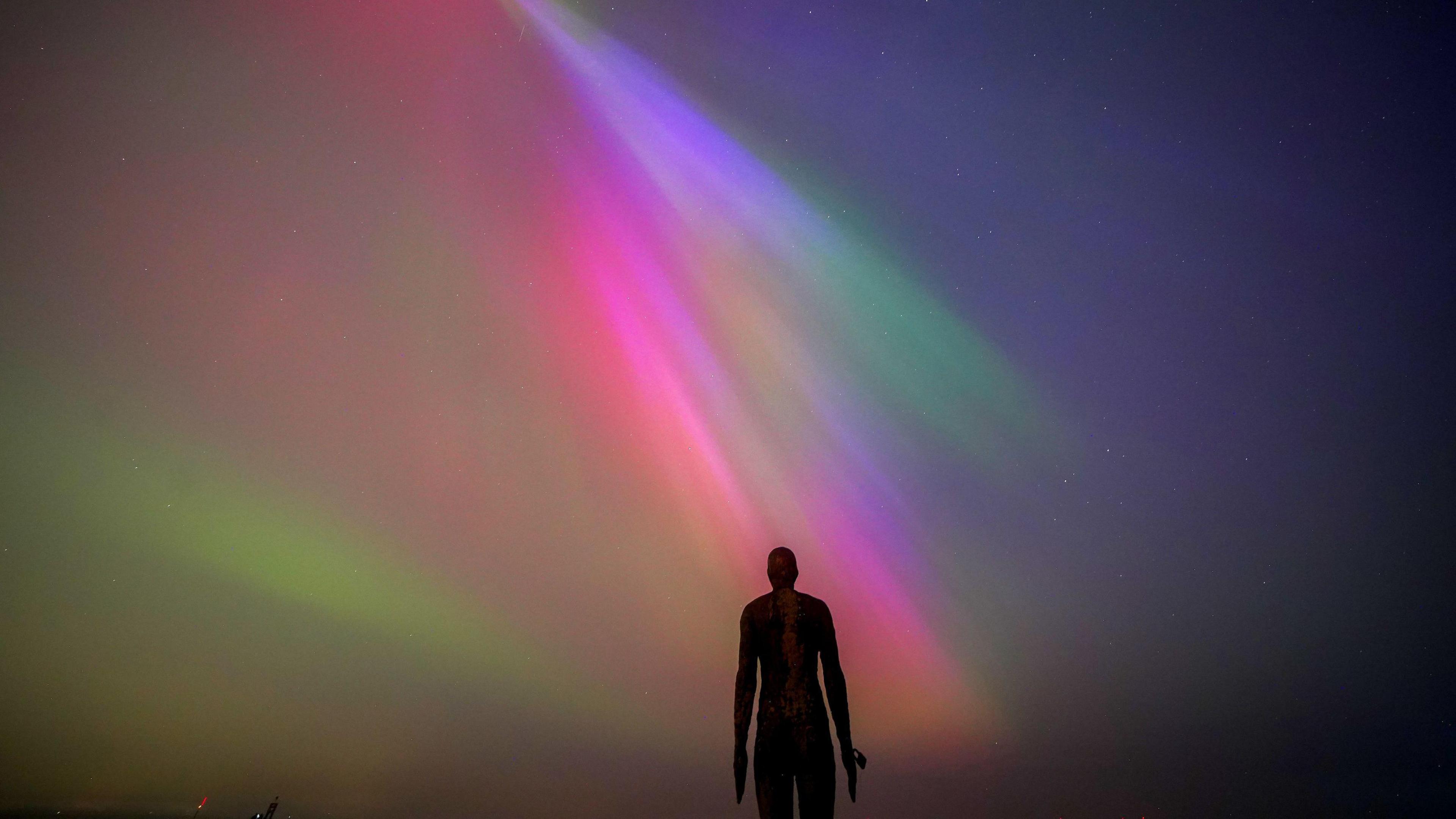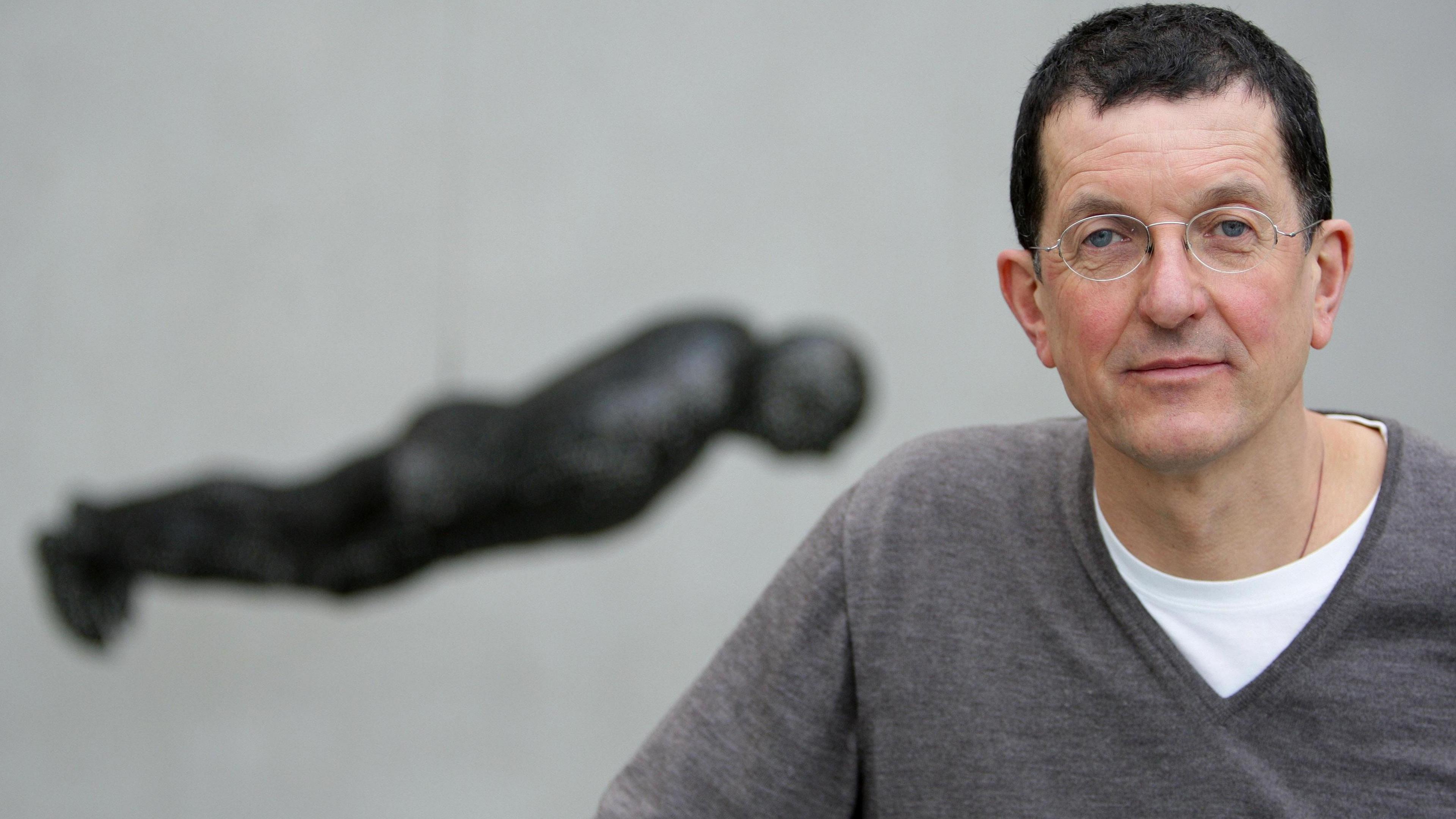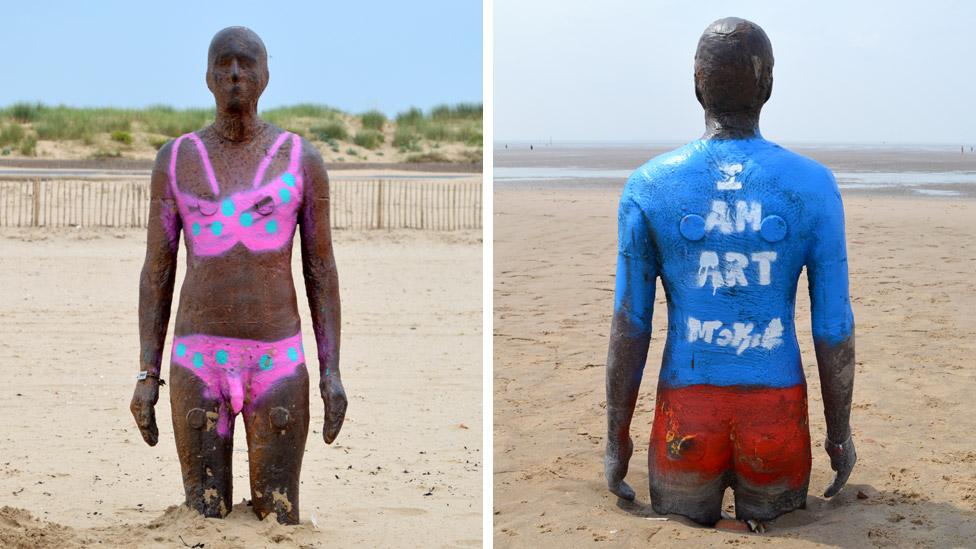Crosby Beach iron men 'belong to Merseyside now'

The Another Place statues on Crosby Beach were installed on 2 July 2005
- Published
The striking iron men of Crosby Beach now "belong to Merseyside", the artist who installed them 20 years ago has said.
Sir Antony Gormley's Another Place, featuring 100 iron sculptures modelled on the artist's own body, has become synonymous with the Sefton coast near Liverpool.
He told BBC Radio Merseyside the statues "don't belong to me any more" and are "literally part of the landscape now".
Analysing Another Place after two decades, Sir Anthony said: "I think that the work is about life and death, love and loss, and without people reacting to it, it's nothing."
He added: "I mean, that's what art is - it's made to be shared."
The installation covers a distance of nearly two miles (3km), with the iron men spaced out along the tide line, and out from the beach towards the Irish Sea and the horizon.
Another Place was commissioned by Liverpool Biennial in partnership with South Sefton Partnership.
The installation was later made permanent by Sefton Council.

Sir Antony Gormley, pictured in 2009, with one of his iron men
Since then it has become an established attraction.
Sir Antony said: "There's something wonderful about the way that they have been embraced by the people of Crosby and indeed the people of Liverpool.
"It's just absolutely amazing the way that people of all ages - people walking their dogs, kids, people running, playing all kinds of games including golf - somehow merge with the work.
"So the kind of gap between life and art has somehow been bridged."
Sir Antony, whose works also include the Angel of the North sculpture near the A1 in Gateshead, said he wanted to evoke the relationship between people and nature.
"I think there are two ways in which we discover ourselves," he explained.
"One is in relation to nature. When we climb a mountain, when we swim in the sea, we kind of return to some really basic relationship with our planetary home.
"But then there's the other self that comes from our relations with others, with our parents, our colleagues, our friends, our family.
"And the two, I think, are both acknowledged in Another Place.
"They're obviously similar bodies to suggest a family relationship - a blood relationship - but at the same time they're very far apart.
"They are about between 150 and 200 metres apart, facing their own destiny.
"And I think that's true for all of us, isn't it?"
Get in touch
Tell us which stories we should cover on Merseyside
Listen to the best of BBC Radio Merseyside on BBC Sounds and follow BBC Merseyside on Facebook, external, X, external, and Instagram, external, and watch BBC North West Tonight on BBC iPlayer.
Related topics
- Published22 June 2017

- Published11 June 2021